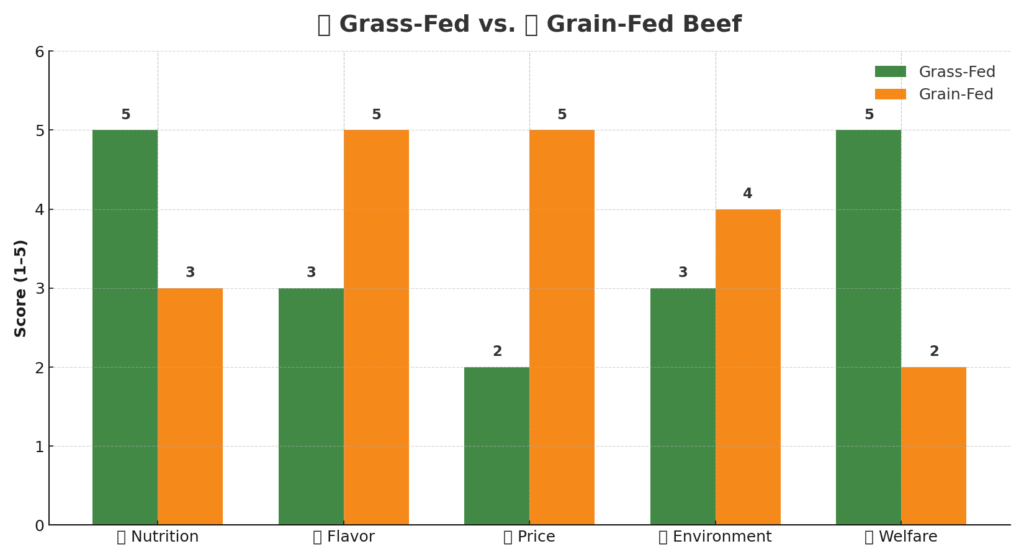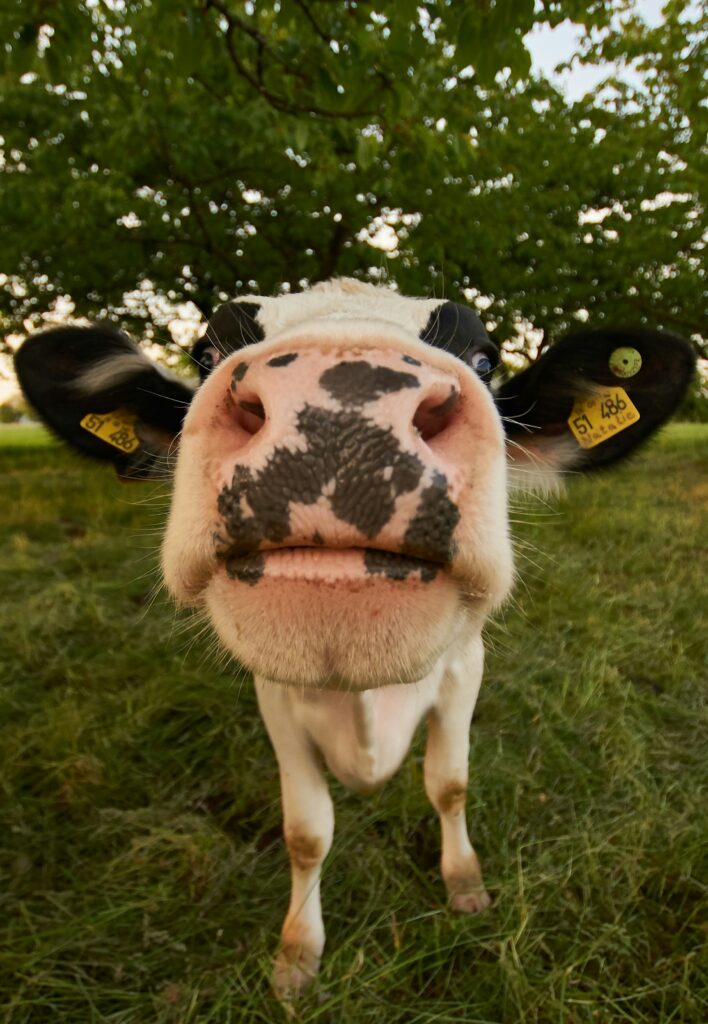Grass-Fed vs Grain-Fed Beef
Walk into any grocery store or farmer’s market and you’ll likely see the same question staring back at you: grass-fed or grain-fed? Beef lovers, health seekers, and eco-minded shoppers often wonder which is better. The truth? Both have pros and cons—depending on what matters most to you.
What Do These Labels Really Mean?
- Grass-Fed Beef: These cattle eat mostly grass and forage throughout their lives. “Grass-finished” means they stuck with pasture diets until the very end.
- Grain-Fed Beef: These cattle usually start on pasture, but later move to feedlots where they’re given a mix of corn, soy, and other grains. This helps them grow faster and develop that rich marbling many steak lovers crave.
Think of it as two different “finishing schools” for cattle—one out on the pasture, the other in a grain-rich buffet line.
Nutrition: Lean vs. Lush
- Grass-fed beef is typically leaner. That means fewer calories, plus a boost of healthy fats like omega-3s and CLA (a type of fat that’s linked to better health). It also packs more vitamins like A and E.
- Grain-fed beef, on the other hand, is richer and juicier. Those extra grains add marbling—the white flecks of fat inside the meat—that give it tenderness and a buttery taste.
So if you’re chasing nutrition, grass-fed has the edge. If you’re chasing flavor, grain-fed often wins hearts (and taste buds).
Flavor: Country Bold or Buttery Smooth?
Ask ten steak fans which tastes better, and you’ll probably get ten different answers.
- Grass-fed beef tends to have a bold, almost “wild” flavor. Some describe it as earthier or even slightly game-like.
- Grain-fed beef is milder, sweeter, and often considered more tender thanks to its marbling.
One consumer study even found that most people picked corn-fed as their favorite, but many foodies now seek out grass-fed for its distinctive taste.

Price, Time, and Practicality
There’s also the matter of how these cattle are raised:
- Grass-fed cattle take longer to grow, which means more land, more time, and usually a higher price tag at the butcher counter.
- Grain-fed cattle reach market weight much faster, making their beef more affordable and widely available.
If budget is a big factor, grain-fed is easier on the wallet. Grass-fed is often sold as a premium choice.

The Environmental Angle
Here’s where things get tricky. Many people assume grass-fed beef is automatically “greener.” But the reality isn’t that simple.
- Grass-fed cattle live longer before reaching full size, which means they often produce more methane (a greenhouse gas).
- Grain-fed cattle reach market weight faster, so their overall footprint per pound of beef can actually be lower.
That said, well-managed pasture systems—sometimes called regenerative grazing—can improve soil health and even capture some carbon. The key is how the farm is run.
Animal Welfare
From an ethical perspective, grass-fed cattle tend to live a more natural life out on pastures. Grain-fed cattle often end up in crowded feedlots, which can be stressful.
For many consumers, that difference alone tips the scales.
Quick Comparison
| Factor | Grass-Fed | Grain-Fed |
|---|---|---|
| Nutrition | Leaner, more omega-3s & vitamins | Higher fat, juicy & tender |
| Flavor | Bold, earthy, sometimes gamey | Rich, buttery, familiar taste |
| Price | Higher | More affordable |
| Environment | More land, more methane | Faster, smaller footprint |
| Animal Welfare | Pasture life, more natural | Feedlots, less natural |
The Bottom Line
If you care most about health and natural living, grass-fed is the better choice.
If you’re after flavor, tenderness, and affordability, grain-fed will likely win you over.
In the end, both types of beef bring something to the table—it just depends on what you want on your plate.
Sources:
- Healthline – Grass-Fed vs. Grain-Fed Beef
- Food & Wine – Talking About Beef Like an Expert
- Southern Living – Grass-Fed vs. Grain-Fed
- Epicurious – Is Grass-Fed Beef Sustainable?
- Washington Post – Grass-Fed Emissions Study


